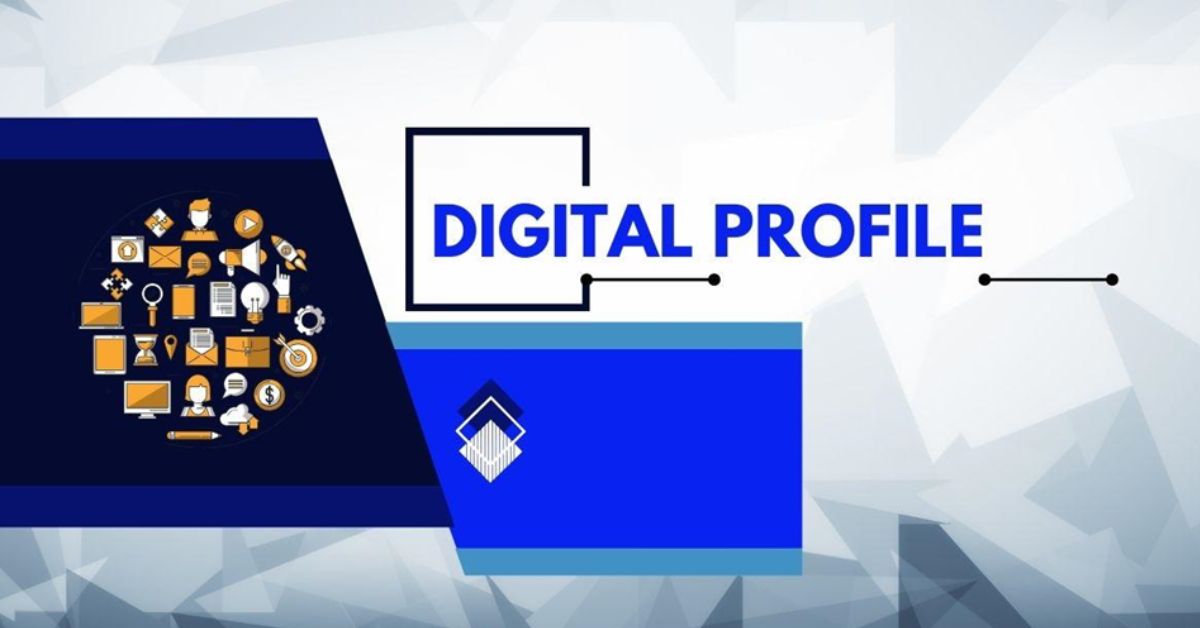BUSINESS
How to Design Custom Labels Customers Won’t Forget

Creating memorable custom labels is essential for brand recognition and customer loyalty as they serve as the visual representation of your brand’s identity and values.
By investing in distinctive label designs that resonate with consumers, you can leave a lasting impression and foster a stronger emotional connection with your audience.
These labels not only differentiate your products from competitors but also reinforce your brand’s credibility and trustworthiness in the eyes of consumers.
Understanding the Importance of Custom Labels
Custom labels are more than just a way to identify a product. They are a powerful tool for marketing, branding, and customer retention.
A well-designed label can make a product stand out on the shelf, convey essential information, and evoke emotions that lead to a purchase.
The Role of Labels in Branding
- First Impressions: Labels are often the first point of contact between your product and potential customers.
- Brand Identity: They reflect your brand’s personality, values, and promise.
- Differentiation: Unique labels help distinguish your products from competitors.
Emotional Connection
- Storytelling: Custom candy labels can tell the sweet story of your brand and product, creating a deeper connection with candy connoisseurs.
- Visual Appeal: Attractive designs catch the eye and make the product memorable.
Key Elements of Unforgettable Custom Labels
Creating a label that sticks in the minds of consumers involves several crucial components.
Each element should be carefully considered to ensure it contributes to the overall impact of the label.
Eye-Catching Design
- Color Schemes: Use colors that align with your brand and evoke the right emotions. Custom honey labels look great with warm, cheerful colors.
- Imagery and Graphics: High-quality images and illustrations can make your label stand out.
- Typography: Choose fonts that are readable and reflect your brand’s style.
Clear and Concise Information
- Brand Name and Logo: Ensure your brand name and logo are prominently displayed.
- Product Information: Clearly state what the product is and its benefits.
- Legal Requirements: Include necessary information such as ingredients, warnings, and certifications.
High-Quality Materials
- Durability: Use materials that withstand handling and environmental conditions. If you are selling hot sauce, for example, use custom printed labels that won’t disintegrate when your product spills on them.
- Finish: Consider finishes like matte, glossy, or textured to add a premium feel.
Steps to Designing Memorable Labels
Designing a label that customers will remember involves a strategic approach. Here’s a step-by-step guide to help you create effective custom labels.
Step 1: Research and Inspiration
- Market Research: Understand your target audience and competitors.
- Trends: Keep an eye on current design trends in your industry.
Step 2: Concept Development
- Brainstorming: Generate ideas that align with your brand message.
- Sketching: Create rough sketches to visualize your ideas.
Step 3: Design and Refinement
- Software Tools: Use design software like Adobe Illustrator or Canva.
- Feedback: Get feedback from stakeholders and potential customers.
- Revisions: Refine the design based on feedback.
Step 4: Printing and Production
- Print Quality: Choose a reputable printing service.
- Proofing: Check proofs for any errors before mass production.
Step 5: Application and Testing
- Application Method: Ensure the label can be easily applied to the product.
- Durability Testing: Test the label under various conditions to ensure it holds up.
Innovative Design Techniques
To make your custom labels truly unforgettable, consider incorporating some innovative design techniques. These can set your product apart and enhance the overall consumer experience.
Interactive Elements
- QR Codes: Add QR codes that lead to engaging content like videos or websites.
- Augmented Reality (AR): Use AR to create an immersive experience for customers.
Unique Shapes and Sizes
- Die-Cutting: Create labels in unique shapes that attract attention.
- Multi-Layer Labels: Use multi-layer labels for added information and interactivity.
Sustainable Materials
- Eco-Friendly Options: Use recycled or biodegradable materials to appeal to environmentally conscious consumers.
- Minimalist Design: Focus on simplicity to reduce waste and appeal to a modern aesthetic.
Case Studies of Successful Custom Labels
Learning from successful examples can provide valuable insights into what works. Here are a few case studies of brands that have designed unforgettable custom labels.
Case Study 1: Innocent Drinks
- Design Strategy: Innocent Drinks uses playful illustrations and a clean, simple design.
- Impact: Their labels convey a sense of fun and natural goodness, aligning with their brand ethos.
Case Study 2: Method Cleaning Products
- Design Strategy: Method uses sleek, modern designs with bold colors and minimal text.
- Impact: Their labels reflect their commitment to sustainability and innovation.
Case Study 3: Lush Cosmetics
- Design Strategy: Lush uses hand-drawn labels and eco-friendly materials.
- Impact: Their labels emphasize the handmade, ethical nature of their products, building trust and loyalty.
Conclusion
Designing custom labels that customers won’t forget is both an art and a science.
By understanding the importance of labels, incorporating key design elements, following a strategic design process, and looking to successful examples for inspiration, you can create labels that not only attract attention but also build lasting connections with your customers.
Invest in quality materials, stay updated with design trends, and always keep your brand’s unique story at the heart of your label design efforts.
BUSINESS
The Role of a Digital Profile in Establishing Professional Credibility

In today’s competitive job market, establishing professional credibility is essential for career growth and new opportunities. Your digital profile is a key component of your reputation, serving as an online portfolio that showcases your skills, achievements, and industry expertise. A well-crafted digital presence not only enhances your visibility but also helps you build trust with potential employers, clients, and professional connections.
Why Professional Credibility Matters
Credibility is what sets professionals apart in any industry. Employers want to hire individuals who demonstrate expertise, reliability, and a commitment to their field. Clients and business partners also prefer working with professionals who have a strong reputation. By optimizing your digital profile, you can position yourself as a knowledgeable and trustworthy expert in your industry.
Building a Strong Foundation with a Complete Profile
The first step in establishing credibility is ensuring that your digital profile is complete and up-to-date. This includes:
- A professional, high-quality headshot
- A compelling headline that summarizes your expertise
- A detailed summary highlighting your career journey and unique value
- A well-structured experience section showcasing key achievements
- Endorsements and recommendations from colleagues, clients, or mentors
A well-organized profile signals that you take your professional presence seriously, making you more attractive to potential employers and business contacts.
Showcasing Thought Leadership
One of the best ways to establish credibility is by demonstrating thought leadership. This involves actively sharing insights, engaging in industry discussions, and contributing valuable content to your professional network.
To enhance your thought leadership:
- Publish articles or blog posts on industry trends, challenges, or innovations
- Share insightful comments on posts from industry leaders
- Participate in relevant discussions within professional groups
- Present case studies or success stories from past projects
By consistently providing value, you reinforce your expertise and build a reputation as a go-to professional in your field.
Leveraging Testimonials and Endorsements
Social proof plays a significant role in credibility. Endorsements from colleagues, supervisors, and clients validate your skills and achievements. Request recommendations from individuals who can speak to your strengths, and offer endorsements in return to strengthen professional relationships.
Well-written testimonials can highlight your problem-solving abilities, leadership skills, or specific accomplishments, giving potential employers or business partners more confidence in your capabilities.
Maintaining a Consistent Online Presence
Credibility is not built overnight—it requires consistency. Keeping your profile updated with recent projects, certifications, and industry involvement ensures that your online presence remains relevant.
To maintain consistency:
- Regularly update your experience and skills section
- Share new certifications, training, or achievements
- Engage with professional content and discussions at least once a week
A stagnant profile can give the impression that you are not actively engaged in your industry, while an active presence shows dedication and continuous learning.
For expert guidance on creating a professional digital profile that enhances credibility, visit Professional Profile.
About Professional Profile
Professional Profile helps professionals craft compelling digital profiles that amplify their online presence and open doors to career opportunities. Through expert advice, tools, and resources, Professional Profile empowers individuals to showcase their skills, build a personal brand, and navigate the digital landscape for career success.
BUSINESS
How Much Should I Pay for a Mini Excavator Rental?

Renting heavy machinery can be a cost-effective solution for construction, landscaping, and utility work. Mini excavators are among the most commonly rented machines due to their versatility, compact size, and ability to handle various tasks. Whether you’re a contractor working on a job site or a homeowner tackling a backyard project, renting a mini excavator can save you time and effort while keeping costs manageable.
But how much should you expect to pay for a mini excavator rental? The cost varies based on several factors, including rental duration, machine size, location, and any additional fees. In this guide, we’ll break down typical rental rates, key factors influencing pricing, and tips for getting the best deal.
What Is a Mini Excavator?
A mini excavator is a smaller version of a full-size excavator, typically weighing between 1 and 10 tons. These machines are designed for digging, trenching, lifting, and demolition in tight spaces where larger equipment would be difficult to maneuver. They are commonly used in:
- Residential and commercial construction – Digging foundations, grading land, and trenching for utility lines.
- Landscaping projects – Creating ponds, removing stumps, and installing drainage systems.
- Roadwork and site preparation – Small-scale excavation for repairs and installations.
- Demolition – Removing small structures, driveways, or concrete slabs.
Because of their compact design, mini excavators are easy to operate and transport, making them a popular choice for rental.
Average Cost to Rent a Mini Excavator
The cost of renting mini excavators varies by location, rental provider, and machine specifications. Below is a breakdown of typical rental prices:
| Rental Duration | Estimated Cost |
| Hourly | $50 – $100 per hour |
| Daily | $200 – $500 per day |
| Weekly | $800 – $2,500 per week |
| Monthly | $2,500 – $6,000 per month |
Additional Costs to Consider
While the base rental price covers the machine itself, you may encounter extra charges, including:
- Delivery and Pickup Fees – If you need the equipment delivered to your site, expect to pay an additional $100-$500 depending on distance.
- Fuel Costs – Most rental agreements require the machine to be returned with a full tank of fuel.
- Damage Waivers or Insurance – Some rental companies offer damage protection plans, which typically add 10-15% to the rental cost.
- Attachment Rentals – Additional tools such as augers, hydraulic breakers, or specialized buckets may cost $50-$200 per day.
- Operator Fees – If you require an experienced operator, expect an additional $50-$100 per hour.
Understanding these costs upfront can help you avoid unexpected expenses when renting mini excavators.
Factors That Affect Mini Excavator Rental Costs
Several factors influence the rental price of mini excavators, including machine specifications, rental duration, and geographic location. Understanding these factors can help you estimate your total cost.
1. Size and Weight of the Machine
Larger mini excavators with higher lifting and digging capacities tend to be more expensive. A 1-3 ton excavator is typically the most affordable, while a 6-10 ton model may cost significantly more to rent.
2. Rental Duration
Short-term rentals (hourly or daily) often have higher per-unit costs than weekly or monthly rentals. If you need an excavator for an extended period, a weekly or monthly rental provides better value.
3. Location
Rental prices vary by region. Urban areas with high demand tend to have higher rental rates compared to rural locations. Additionally, states with a strong construction industry may have more competitive pricing due to increased equipment availability.
4. Rental Company Policies
Different rental providers set their own pricing based on equipment availability, brand reputation, and service quality. Comparing quotes from multiple companies can help you find the best deal.
5. Seasonal Demand
The time of year can impact rental rates. During peak construction seasons (spring and summer), demand for mini excavators is higher, leading to increased rental costs.
Where to Rent a Mini Excavator
There are several options for renting mini excavators, each with its advantages.
1. Local Equipment Rental Companies
Independent rental providers may offer flexible terms and personalized service.
2. National Rental Chains
Companies like United Rentals, Sunbelt Rentals, and Herc Rentals provide a wide selection of equipment with standardized pricing and nationwide availability.
3. Dealership Rentals
Some heavy equipment dealers, such as John Deere and Caterpillar, offer rental programs for their machinery.
4. Online Rental Marketplaces
Websites like BigRentz and EquipmentShare allow renters to compare pricing from multiple suppliers.
Tips for Getting the Best Rental Price
If you’re looking to rent mini excavators while staying within budget, these tips can help:
1. Get Multiple Quotes
Compare prices from at least three rental providers to find the most competitive rate.
2. Book in Advance
Demand for equipment rentals is higher in warmer months. Reserving your rental early can help you secure lower rates.
3. Choose the Right Size
Renting a larger excavator than necessary will increase costs. Make sure you select the right size for your project.
4. Look for Promotions or Discounts
Some rental companies offer discounts for long-term rentals or repeat customers.
5. Understand the Rental Agreement
Be aware of additional fees, such as late return charges or maintenance costs.
Renting vs. Buying: Which Is the Better Option?
For businesses and individuals who frequently use mini excavators, deciding whether to rent or buy is an important financial consideration.
When Renting Is the Better Choice:
- You only need the excavator for a short-term project.
- You want to avoid maintenance and repair costs.
- You lack storage space for heavy equipment.
- You need different models for different jobs.
When Buying Is the Better Choice:
- You frequently use an excavator for ongoing projects.
- You want to invest in equipment that adds value to your business.
- You plan to customize or modify the excavator.
- You want to avoid long-term rental costs.
For most occasional users, renting is the more cost-effective option. However, businesses that require an excavator regularly may benefit from ownership.
Final Thoughts
Renting a mini excavator is a practical solution for contractors, landscapers, and homeowners who need powerful excavation equipment without the commitment of ownership. Rental costs vary based on machine size, duration, and location, with hourly rates starting at $50 and monthly rentals reaching up to $6,000.
By comparing rental providers, booking in advance, and choosing the right machine size, you can ensure you’re getting the best deal. Whether you need an excavator for a single-day project or a long-term construction job, renting provides the flexibility and affordability to complete the job efficiently.
BUSINESS
Achieve Seamless Operations with a Managed Complete Solution

In the modern business environment, efficiency isn’t merely an aspiration; it’s a requisite for survival and success. Enterprises seeking to outpace the competition and thrive in their niches must leverage every tool at their disposal. One of the most effective strategies is to implement a manage complete solution that streamlines operations and enhances productivity. This article delves into the merits of adopting such solutions for seamless business operations.
Understanding Managed Complete Solutions
A managed complete solution refers to a comprehensive service that encompasses all aspects of a company’s operations, providing support, management, and deployment of business processes and technologies. By consolidating various services under a single provider, businesses can enjoy a harmonised approach to their operations.
Optimising Business Operations
At the heart of optimising business operations is the integration of processes and tech solutions. A managed solution eases the burden on internal resources, freeing staff to focus on core business initiatives rather than getting entangled in the intricacies of multiple service providers, each with its own sets of requirements and standards.
Customised Approach to Efficiency
Every business is unique, with distinct processes, customer bases, and market challenges. A key advantage of a managed complete solution is the ability to tailor services to fit the specific needs of a company. Customisation ensures that a business isn’t just adopting new processes, but enhancing and refining existing ones for maximal efficiency.
The Benefits of a Managed Complete Solution
The move to a managed complete solution comes with a multitude of benefits. Enterprises that adopt this approach often realise substantial gains in their overall efficiency, due to a number of factors, including streamlined technology management, improved communications, and better data handling.
Centralised Communications
Communication is the lifeblood of any business operation. By centralising communication channels, businesses reduce redundancies and confusion, ensuring that information is distributed quickly and accurately. This synergy improves both internal and external communication, leading to better collaboration and higher customer satisfaction.
Cost-Effective Operations Management
Cost efficiency is another significant benefit of a managed complete solution. With a single provider handling multiple aspects of enterprise operations, there is no need to invest in disparate systems or hire specialised staff for each function. This consolidation results in reduced overheads and more predictable budgeting.
Enhanced Security and Compliance
Securing business data and ensuring compliance with various regulations can be daunting. Providers of managed complete solutions usually adhere to strict security standards and are well-versed in compliance requirements, providing businesses with peace of mind and protection against potential breaches and legal issues.
Leveraging Technology for Enhanced Productivity
Technological advancements are rapidly transforming the corporate landscape. Managed solutions embrace such technological innovations, incorporating them into the fabric of everyday business operations, which significantly enhances productivity.
Automating Routine Processes
One of the key productivity boosters is the automation of routine tasks. Automating such tasks decreases human error and allows staff to allocate more time to value-adding activities. The outcome is an upsurge in productivity and a more engaged workforce.
Agility and Scalability
Business demands can fluctuate, and a managed complete solution offers the agility and scalability required to adapt to these changes swiftly. As a company grows or contracts, the managed solution can adjust accordingly, ensuring seamless operations throughout the business cycle.
Choosing the Right Managed Complete Solution
Selecting the right managed solution provider is critical. It requires a thorough assessment of a business’s needs, objectives, and current infrastructure. Providers should offer scalable solutions that can evolve in alignment with the company’s growth trajectory.
Assessment and Consultation
Reputable managed solution providers commence with an in-depth assessment of a business’s current operations. Consultation is essential to identify inefficiencies, opportunities for improvement, and to understand the specific goals of an enterprise.
Integration and Support
Fundamental to a successful deployment is the seamless integration of the managed solution with the existing business infrastructure. Continuous support and proactive management from the provider also play vital roles in ensuring that the business operates at its peak capabilities.
Partnering for Success
Ultimately, the relationship between a business and its managed solution provider should be seen as a partnership aimed at achieving mutual success. With a shared vision and commitment to efficiency, this partnership can steer a company towards achieving a competitive edge in its industry.
Conclusion
Achieving seamless operations in today’s fast-paced business world necessitates a strategic approach where efficiency is not left to chance. A managed complete solution embodies this approach, providing a centralised, cohesive service that addresses all aspects of a business’s operations. By leveraging such solutions, businesses can not only streamline their processes but also gain the agility needed to adapt and compete in an ever-changing marketplace. The key lies in choosing a provider that understands the company’s unique needs and has the capability to deliver a truly managed solution that will drive operational excellence.
Transform Your Business Operations
For companies seeking to transform their business operations and achieve seamless efficiency, adopting a manage complete solution is the way forward. It’s about more than just technology; it’s about gaining a strategic partner dedicated to propelling the business towards new heights of operational excellence.

 Cartoon1 year ago
Cartoon1 year agoUnlocking the Potential of Nekopoi.care: A Comprehensive Guide

 Game1 year ago
Game1 year agoExploring Aopickleballthietke.com: Your Ultimate Pickleball Destination

 BUSINESS1 year ago
BUSINESS1 year agoWhat Companies Are In The Consumer Services Field

 HOME IMPROVEMENT1 year ago
HOME IMPROVEMENT1 year agoVtrahe vs. Other Platforms: Which One Reigns Supreme?

 BUSINESS11 months ago
BUSINESS11 months agoUnraveling the Mystery of 405 Howard Street San Francisco charge on Credit Card

 TECHNOLOGY11 months ago
TECHNOLOGY11 months agoThe Guide to Using Anon Vault for Secure Data Storage

 ENTERTAINMENT8 months ago
ENTERTAINMENT8 months agoUnderstanding Bunkr Album: A Comprehensive Guide

 ENTERTAINMENT1 year ago
ENTERTAINMENT1 year agoThe Epic Return: Revenge of the Iron-Blooded Sword Hound
















